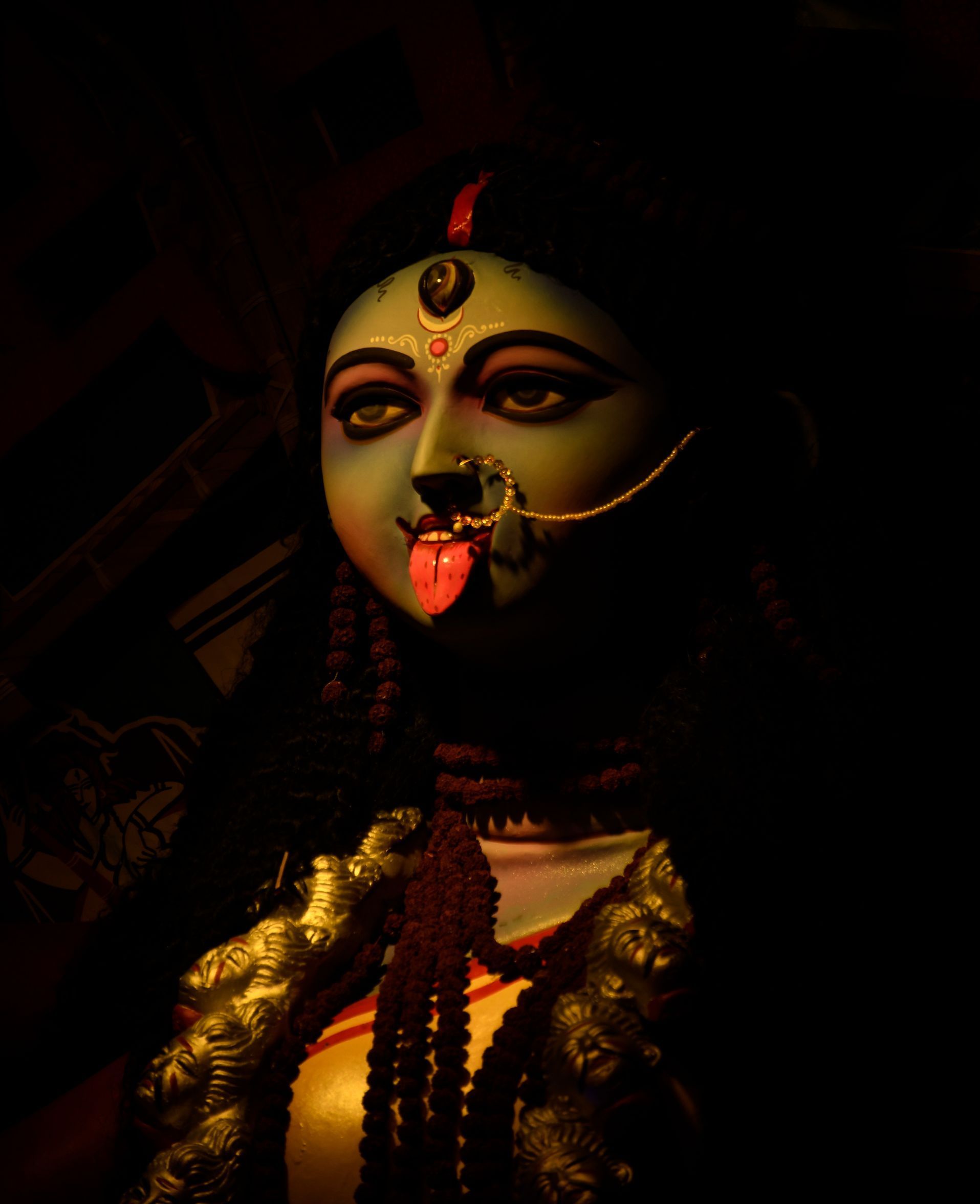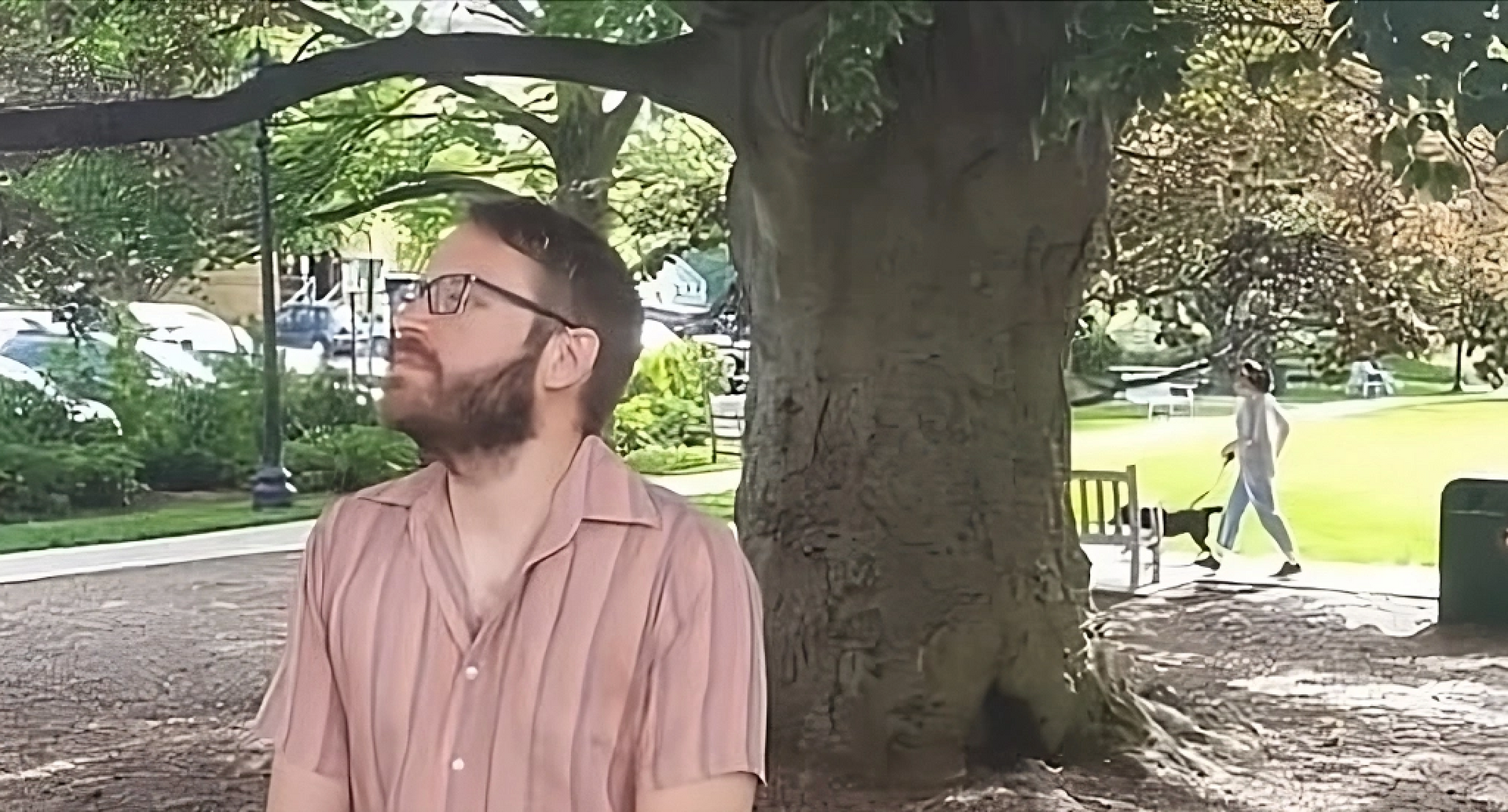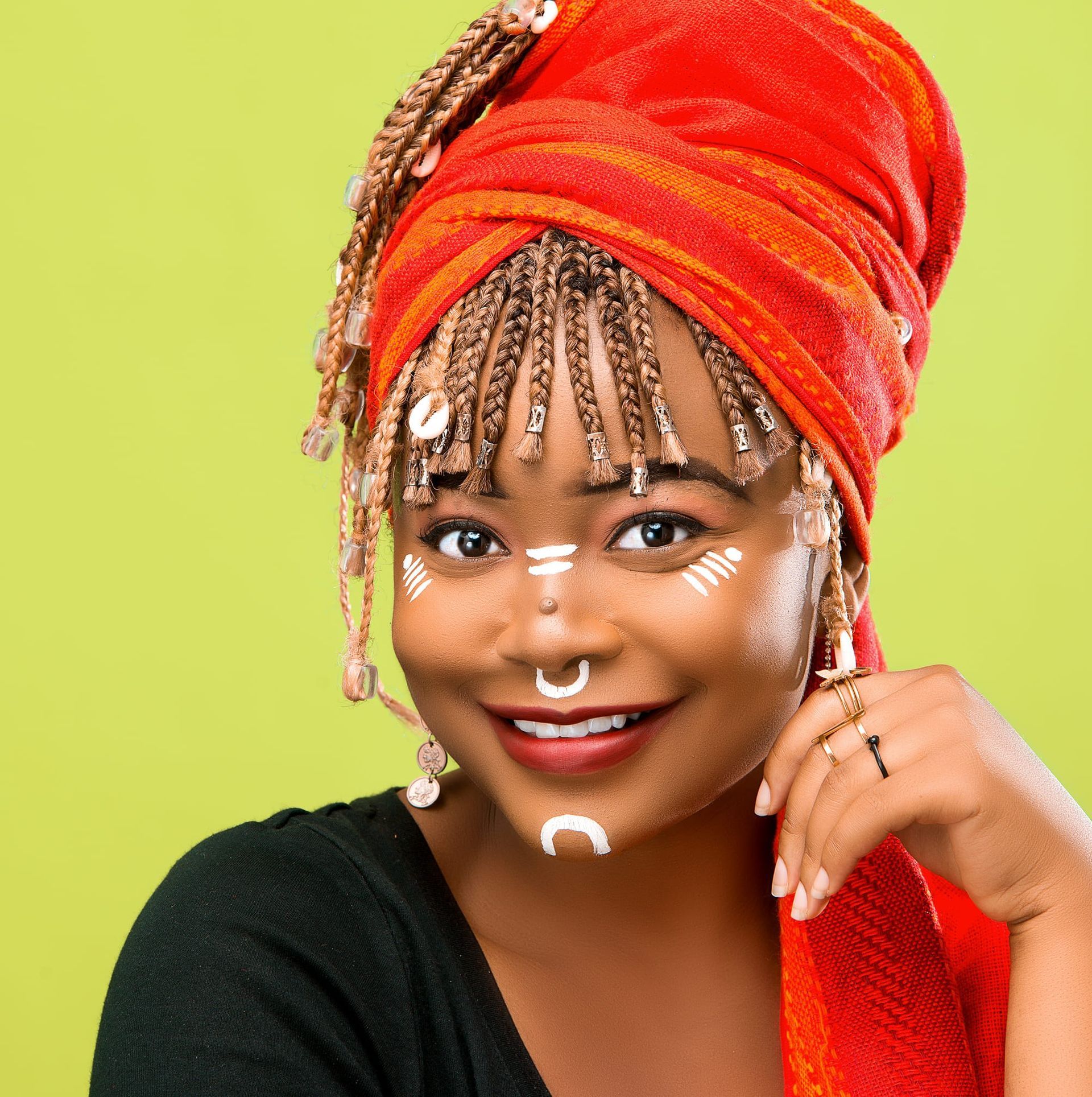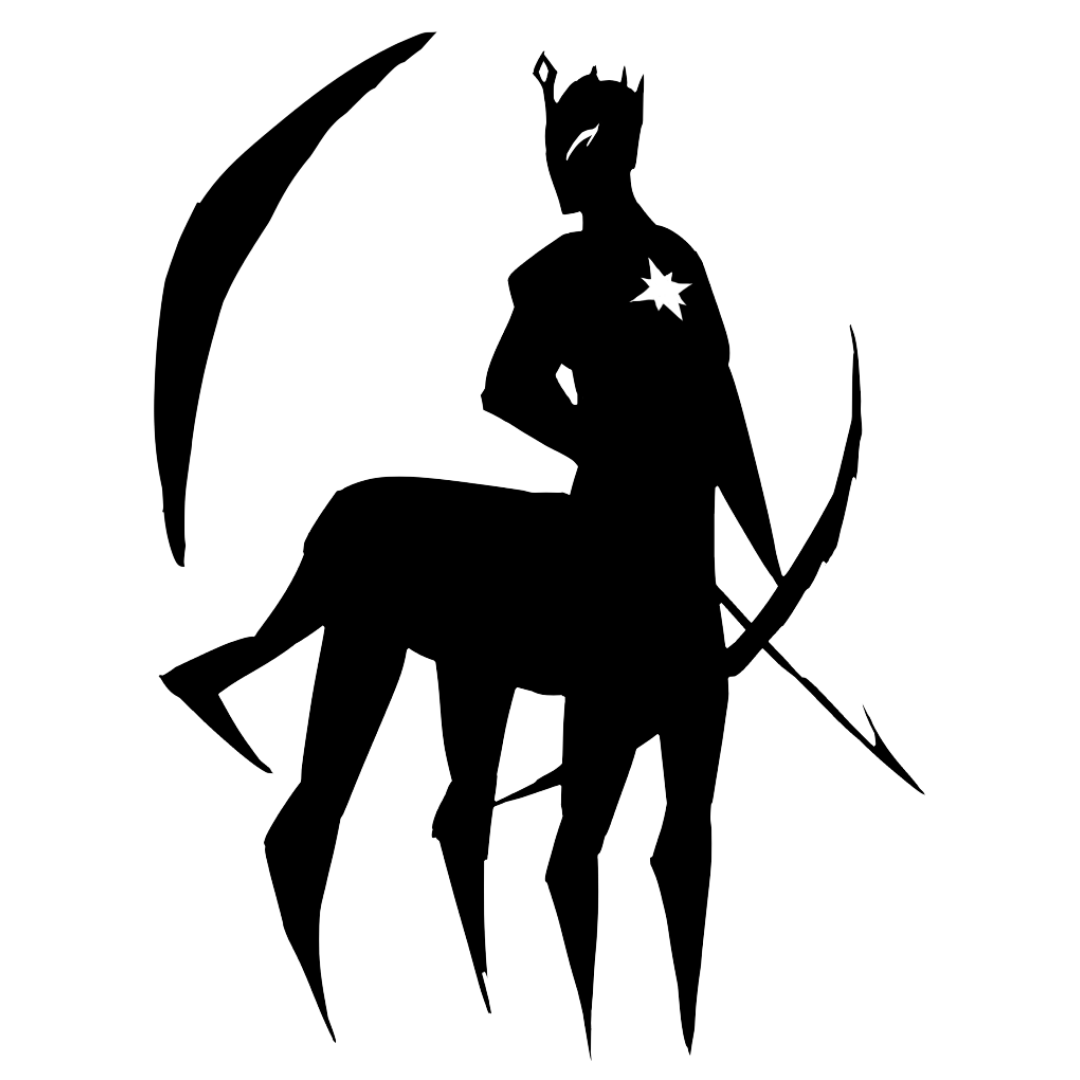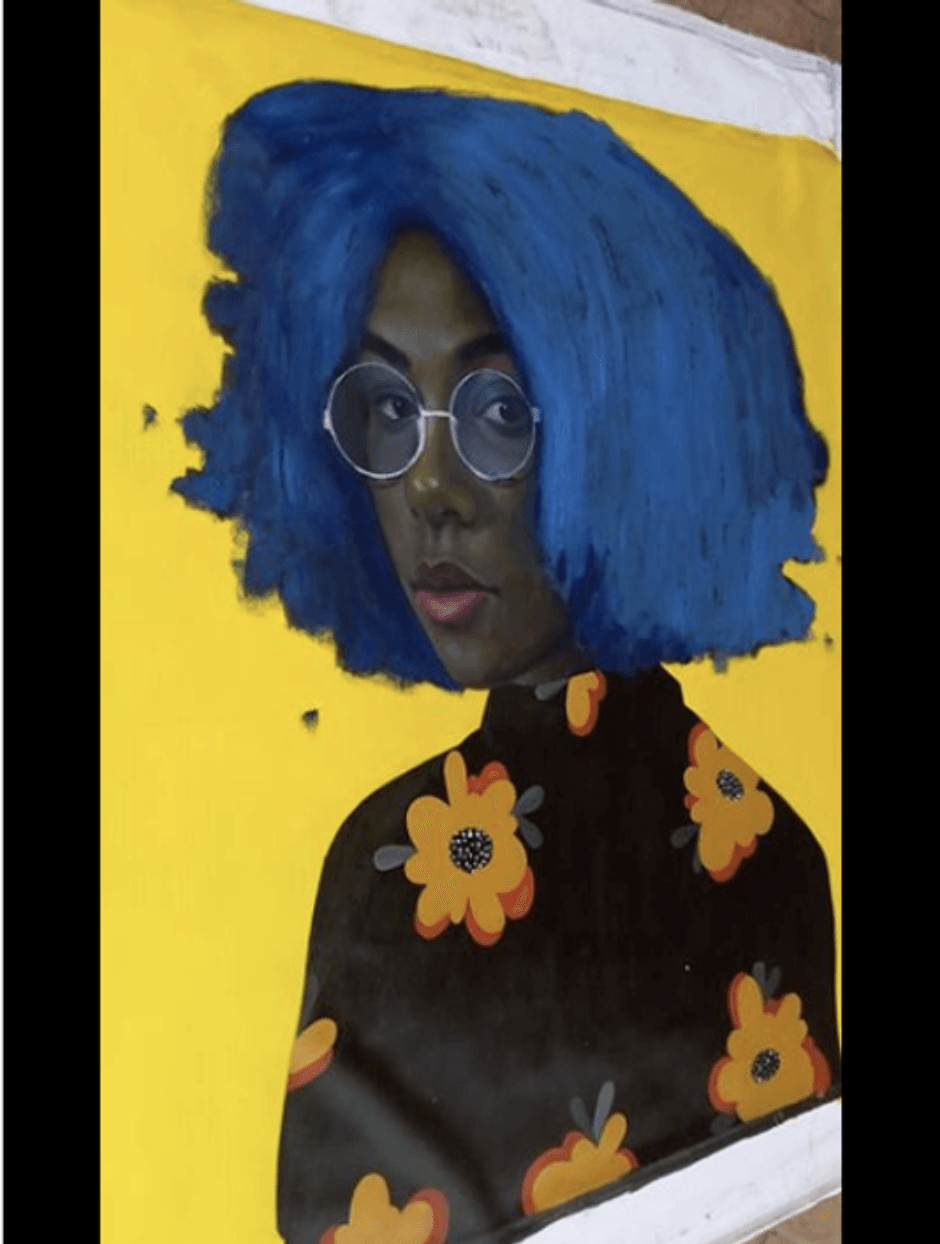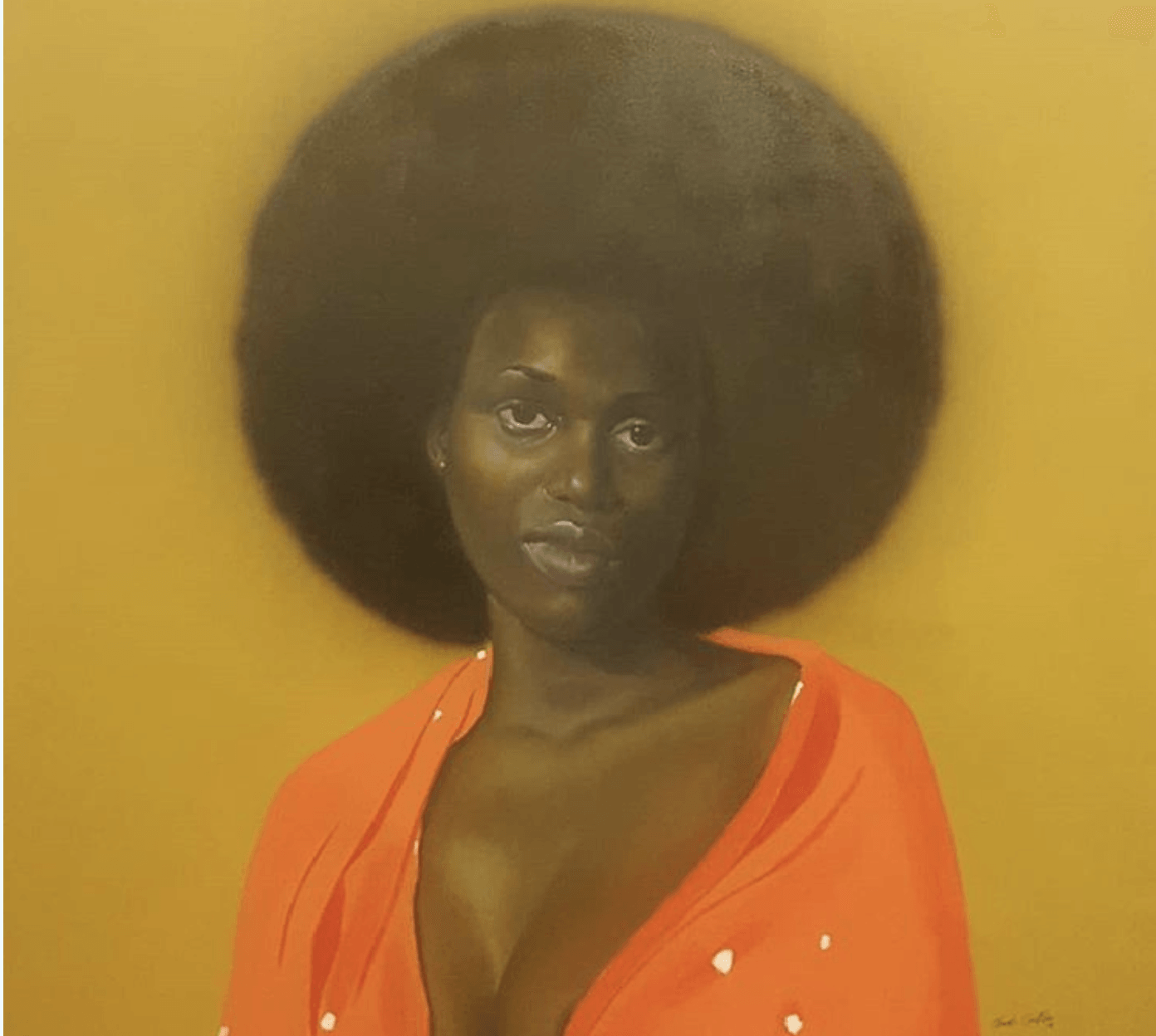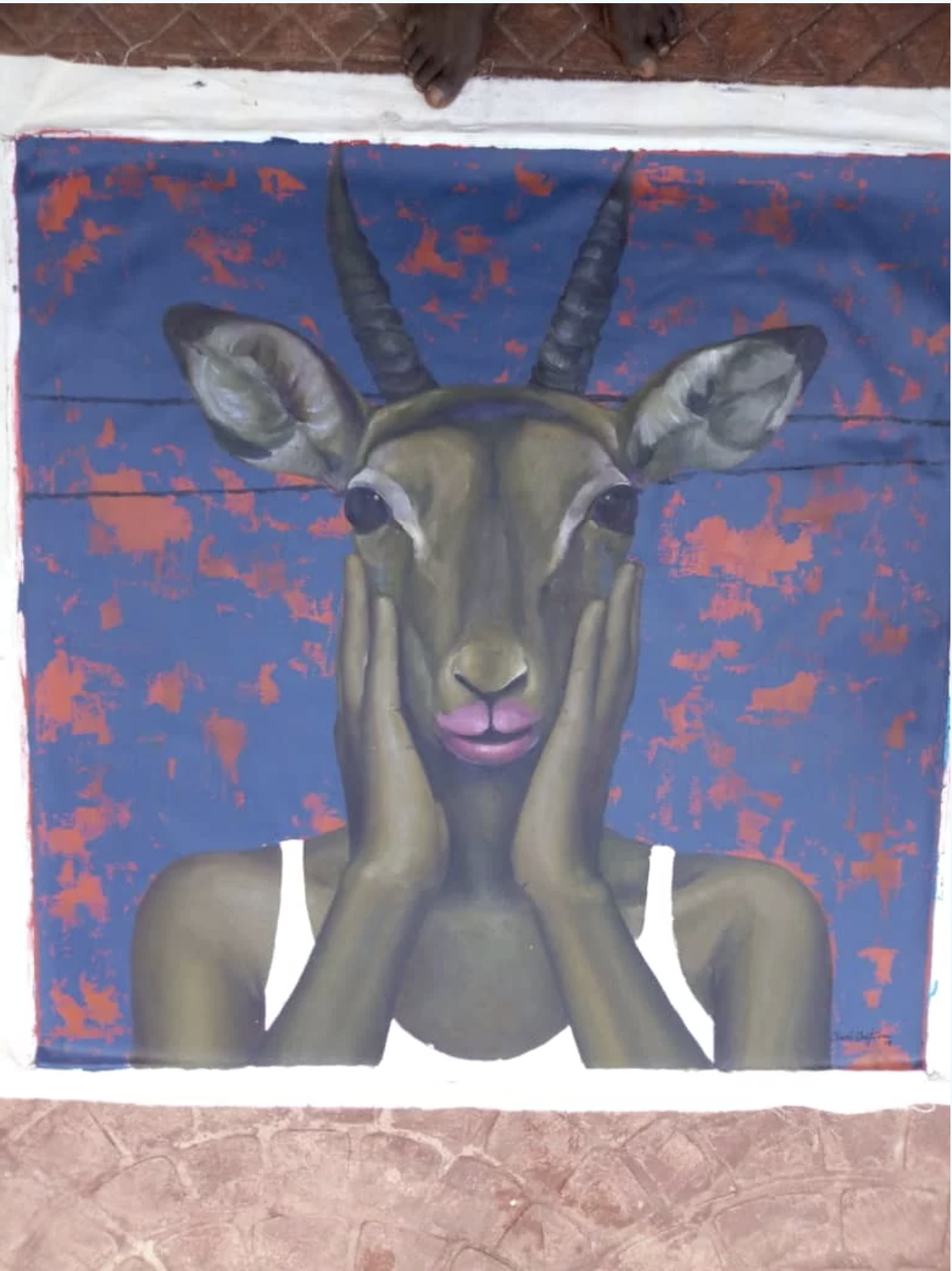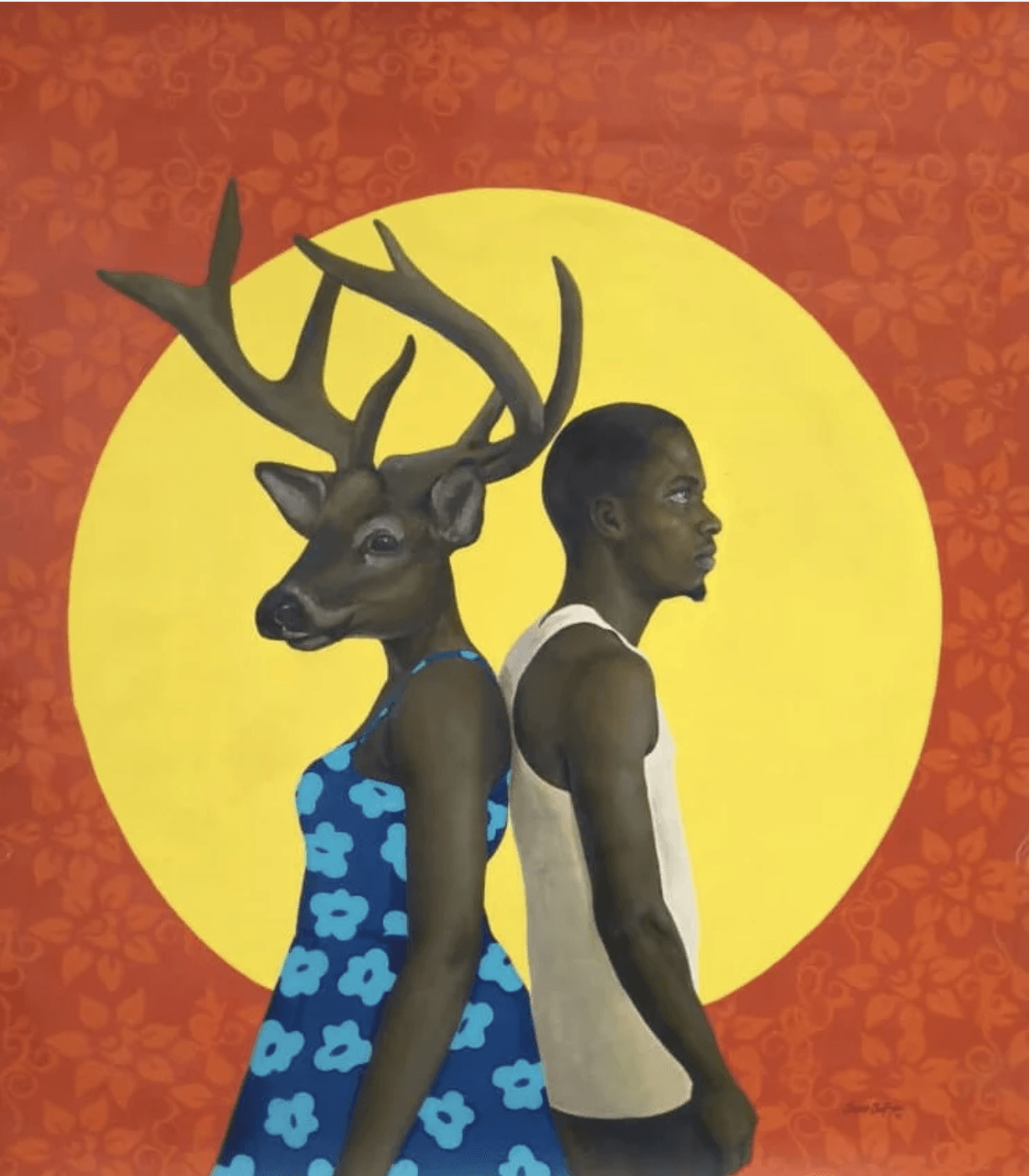ARTHA | Oluwole Omofemi
Sept. 2021 - Updated.
ARTHA
Oluwole Omofemi is an international artist from southern Nigeria (Ibadan). His colorful canvases explore universal themes: family tenderness, the sweetness of childhood memories, the mystery of the feminine being and its symbolism, the beauty of Darkness, the darkness of Beauty. As any artist, he experienced loneliness and emotional pain at an early age, and in a resilient act, chose to channel them into art.
Oluwole means 'The Divine has paid us a visit' in Yoruba.
Oluwole Omofemi sees art as an individual and collective path to inner discovery unveiling what's buried in the artist's psyche and enlightening humanity at the same time. His paintings have been exhibited in Nigeria,
London, Italy, and Belgium. His talent is now acclaimed all over the world.
Oluwole Omofemi mentors young artists in his studio in Ibadan, South Nigeria.
We are delighted to feature your work in Revue {R}évolution, Oluwole Omofemi. So much in your art resonates with our
mission
as a Poetry review. This is going to be a long and passionate conversation about the dynamics of creativity, fame, your relationship to reality and the archetypal Feminine!
The Artist, Inertia, and Creativity
REVUE {R}ÉVOLUTION The inspiration for Revue {R}évolution comes from Sankhya and Kashmiri Shaivism, two Hindu philosophical systems describing reality as the interplay of Inertia, Passion and Harmony and what we do here is show how we carry these forces within us, and how they shape us as Humans, Poets and Artists for the better or worse. Let's start with inertia, the absence of movement or progress. The denial of their creative calling, either by themselves or by society appears to be a common trait in all poets and artists lives. Have you experienced such negation of your individuality and what was your reaction ?
OLUWOLE OMOFEMI: Thank you very much for this question, Murielle. Growing up as an artist under the brown roof of Ibadan, Nigeria, was one of the most difficult tasks for me as a young ambitious boy. I faced a lot of rejections from relatives and friends. My parents weren't in total support of what I was doing either. My dad wanted me to go into a more ''professional'' job like doctor, engineer or lawyer for reasons I could not fully comprehend. Maybe the lack of exposure to art and its community or field was a major problem for him back then, something which makes me smile now. The interior part of Ibadan is where I grew up, a place where you have to struggle to survive every day. Most of the money I got to buy art materials came from my savings. At some point in my life, I thought pursuing an artistic career was a mistake because I was not getting the response and acceptability I expected. So I decided to forget about the society's response to my creative calling. To me, art was my "Akunleya," my fate, a Divine gift from Olodumare, God.
Thus, Yoruba belief holds that achieving anything contrary to his Akunleyan is impossible or unachievable because Akunleya would not allow the possibility of such change. A popular phrase people use in Nigeria sums this faith up: "o fe se rere, sugbon Akunleyan ko gba", meaning "He wants to do well but his Akunleyan does not let him". This is mostly used when a person is seen making all sorts of efforts to succeed but all to no avail. Again, the Yoruba confirms the strength of Akunleyan, in sayings like "a kunle a yan eda, a d'ele aye tan oju nkan ni": "We knelt in heaven and chose our destinies, but once we come to Earth, we become impatient". I believe art has been chosen from my predestined "Akunleya".
REVUE {R}: A rather poetic phrase! Akunleya is an abstract expression of a human experience, concrete and universal, similar to what most people refer to when they invoke Karma as the absence of free will. In Vedic philosophy, Karma is the law of cause and effect, a concept western philosophers like Spinoza named ''the causal principal.'' Trying to control an effect is an uphill task, something irrational, but one can always choose one's causes. So, free will is always available. Your testimony proves all creators need to develop an unwavering will power, a cause or a resolve so firm the most dire existential circumstances will bend under its effect. Now since Akunleya prevents change, it is a 'tamasic' force. Tamas means inertia in Sanskrit, and another characteristics of inertia or 'Tamas' in Sanskrit is darkness.
For us poets, metaphysical darkness is rapture because the experience of transcendence is impossible without it. Dark is the symbol of mystery, a ravishing quality, though it sometimes loses a bit of charm when it covers human skin! Talking about racism is always difficult, and living in the US made me realize how dark I was. I am not complaining. New York is a wonderful city to come out as a universal Black woman! What was your journey through darkness?
WOLE: Tamas! This is one of the most significant experiences of the black community as a whole. Black is a universal and beautiful color. Within black, every other thing was created! The bible in Genesis evokes darkness as 'the beginning of creations'. All other things came out of "black": light/white came out of dark and I'm proud to say dark is the mother of all colors.
Before European contact, I believe Black people used to embrace who they were; Black culture or identity and especially darkness of skin. Contacts with other cultures brought some positive and negative things. In Africa, we say 'Blacks don't crack' due to the way our mothers and fathers nourish their skin from natural ointment like "Ori" shea butter or osun to cream their body. What I mean is in Africa, we love our bodies/skins, so we do not experience this tug of war you are mentioning.
REVUE {R}: Another aspect of 'tamas' is negativity. Now, this is a vast philosophical concept encompassing highly unpleasant, destructive behaviors to depression or negative emotion. To be a poet implies exposure to extreme emotions, a journey through depression and exhilaration causing equal pain in the end. Can you share your emotional experience from negativity to excitement with us? How do emotions influence your creativity?
WOLE: I always love to paint my emotions on canvas. What does this mean? Mostly that I love to paint when I'm happy and also when I'm sad. You can't talk about happiness without its opposite; they work together. A few years ago, I created a body of works which I titled "Dying in love" to express my predicament then and show how I did everything for "love" and received its contrary, being rejected and cheated on. This was the most disappointing part of my life.
Emotions, Dynamism and Creativity
MURIELLE:
Emotions are such a fascinating phenomenon, aren't they? Besides a bunch of poets, artists and philosophers who've inspired me to create Revue {R}évolution, I think emotions are the real mothers and fathers of this review. Each time we're busy enjoying one, its exact painful opposite comes. Most words describing emotion in French are feminine. La colère (anger), la honte (shame), la joie (joy)', la haine (hatred), la passion, la tristesse (sadness)... Observing them fills me with wonder, the mother of all emotions. A perfect transition for our next subject: The Feminine. Your relationship to the Feminine is one of passion. The painting entitled 'Openness not an option' made me smile because you've captured not only a beautiful female model, but a state of being most women are familiar with from times immemorial: secrecy, and a bit of pride or disdain. In an interview with Anna McNay from
Studio International, you declared 'Women are like God to me, although I don't want to go there'. Why won't you and how did you find out? (laugh) Can you elaborate on your relationship to the Feminine?
When God said, "Let's create man in our image, he was talking to Artists." - Oluwole Omofemi
WOLE: I have always considered women from a completely different angle. In that interview, I said "women are like God or God Himself.' The study of the feminine gender is a practice for me. Women are unique in regard to their flaws--everybody has some. Now let's talk about The Supreme being, the almighty God and the characteristics HE possesses which made him who He is. Some of HIS qualities are love, compassion, caring, forgiveness, lightheartedness, jealousy etc... Women's natural acquaintance with emotion makes them the best reflection of the Supreme Being to me, and the advanced version of men. This is how I perceive them, one thing the bible also expresses in the story of creation in which the woman comes after man. Men are more logical beings with all their thinking, to me.
REVUE {R}: Most religious fanatics use the story in Genesis to justify female's inferiority, so your interpretation is quite refreshing. That said, I grew up in a catholic-atheistic-animistic family --an inspiring mess in hindsight, although I am happy to be an adult now-- and as for women being the advanced version of men, I have no clue. The female environment of my childhood was full of taboos, conflicts and secrets and painful break-ups with men. Also, I understand the beauty of divinity. To me, God is in the experience of the absolute and I never understood the concept of ''divine jealousy.'' Why would a being supreme and almighty be jealous? Emotion is what moves us all, and I think it belongs to no one. Perhaps women respond to certain types of emotions, quite distinct from those causing men to act, and perhaps they have simply been trained to respond to such emotions for gratification. In Congo-Brazza, we have this old legend of Mami Wata (Mummy Water), a magical being whose power rests solely on water. She seduces men and kidnaps children when families fail to protect them. In Brazzaville, people often call a beautiful single woman 'Mami Wata'.
Such ambiguity causes a lot of distress; women trade peace with people pleasing. Water appears to be a feminine symbol of creative or destructive emotion in many mythologies of the world. For me, artists are the essence of the feminine. They are our sacred and metaphorical mothers: their sensitivity is so extraordinary that it can transform matter. Artists, like poets, provide subtle nourishment for our souls. Because they do something most people only dream of doing (but don't do for fear of confronting their emotions), we gratify artists with fame or punish them with denial of their creative calling. For me, celebrity is a form of hysteria, an anomaly of otherness that prevents the artist from maturing and fulfilling his mission for the community: to keep and embody the memory of our unity. How has fame manifested itself for you? How did you react and what would you say to artists who are hungry for recognition or who are depressed by the indifference of their community?
WOLE: You raised an interesting point. Fame is like a power and the experience of becoming famous provides much ego and pride. Newly famous people find themselves warmly embraced and loved by the surrounding people. Naturally, a part of you wonders why people suddenly befriend you and you start to question their loyalty and wonder if they like you for who you are or for what they want to get from you. Fame is good and dangerous. A young emerging artist who wants to be notorious for his/her own style and uniqueness shouldn't focus on fame, in my opinion. Working on oneself and becoming the best version of oneself is beneficial. Fame will come naturally when you decide to be yourself and won't try to be someone else anymore. In my case, fame just happened. Everybody has a unique nature or power that distinguishes them from others.
The Artist, Harmony, and Creativity
REVUE {R}: Now Harmony is our favorite subject, a state of tranquility arising when duality stops, when opposites are reunited. Here at Revue Révolution, we believe Poets and true Artists to be natural channels of Harmony, and its secret guardians. In their lives--inseparable from their jobs--they strive to reunite what's extreme: the visible and the invisible, emotion and matter. Poets and artists experience the tension of this paradox more than anyone else in these times of restlessness and heaviness because they are intimate with complex emotions. Our favorite totem is the deer disguised as an archer or a hunter. The doe dwells in the wilderness with elegance. A cousin to the antelope, she symbolizes a diversity of polarities in world mythology and has a profound, mystic aura. Magical cervids chase an illusion hoping they will find the truth, embody Beauty to find the world is hideous or represent peaceful living with nature and the thrill of the chase. Your paintings of women as antelopes are evocative. Can you tell us more about why you chose the antelope as a muse? Why did you paint a man as an antelope too?
Courtesy of Oluwole Omofemi, Oil and Acrylic on Canvas.
Oh Deer!
WOLE: In African culture, the antelope is a pathfinder. Pathfinders often come to reveal we have lost our ways somewhere in our lives. Antelope as a symbol speaks of decisiveness and speed of action, which requires us to step out of our own heads, to stop thinking our way and start feeling our way, going beyond analysis and categorization, which can often slow our actions down and lead to indecision. To be an artist means being able to reach this part of our minds which is in touch with things our rational literal minds cannot comprehend. To flow through life or ''be in the zone'' means we have found this inner space which carries us to and through those places we do not understand and unless we strive to find it, we cannot be artists.Swift as the antelope, our bodies will flow through life effortlessly if we choose to trust beyond what we already know, what we can name or analyze. This is more than animal instinct. This is the place of spirit, inspiration, and the truest creativity. The Antelope calls for us to follow the path leading us to this zone, a place we will recognize deeply within ourselves and have us drop all hesitation. Imbued with power and the joy that comes to those who live life to the fullest only, we will be swift within our creator's selves and in accord with the completeness of our world.
Courtesy of Oluwole Omofemi, Oil and Acrylic on Canvas
MURIELLE: Thank you for this symbolic insight in the creation mindset. The expression of harmony is compelling in your artwork. Not only do you paint colors as lively as life itself but also, African women with airy, fluffy hair, like an emanation of the universe or the sky, like an extension of the self or a crown (or its opposite: a weapon). One of the most captivating archetypes in Hindu pantheon is the dark goddess Mahakali, the mother of the universe. 'The Disheveled' is another name for her. Kali embodies ultimate freedom from limitation (Moksha) and walks around the universe naked with long hair floating, enraged. We also love Sif, the Norse female deity with golden hair who lost them to the hands of Loki, a trickster God who brings dismay everywhere he goes and forces everyone to face such helplessness they must fight to exist and grow in power. Long story short, is this why you paint women and majestic black hair? To harmonize them with their natural power and freedom? Can you elaborate on your own perception of what hair represents and tell us more about Nigerian Goddesses?
WOLE: In the 60s,70s, hair served as a symbol of identity, strength, power within a famous racial movement. The bible tells the story of Samson who lost his power when someone cut his hair off. All connection with God was gone for him, and only when his hair grew back was he restored in his strength. A surprising capillary effect of Black hair which fills me with awe is no matter how we comb or treat our hair, they never fall down, rather stretch or rise. To me, hair is a pole or antenna which gives us the power to connect with the Divine, like those old Nokia phones with antennas; their connection is always super compared with the phones we use in these modern days (laughs).
MURIELLE: Yes, in a long, distant and uncertain past, a woman named Delilah cut Samson’s hair. She has joined the family of women temptresses, infrequentable and vile and guilty of destabilizing the world order with their sensitivity, beauty and creative power: Eve, Lilith, the Gorgon⬇️, Circe, Ishtar, Medea and even Kali. These eternal muses are wonderful inspirers for modern women still seeking what defines them. Yet, the mythological tales that shape our real societies and organized religions focus on their unruly nature, which makes them destructive and unattractive. Is there a particular goddess in the Yoruba pantheon that inspires you?
WOLE: Yes, all of them!
Comment this article!
One rule: Be courteous and relevant. Thank you!
This interview was conducted by Murielle Mobengo.
Revue {R}évolution
